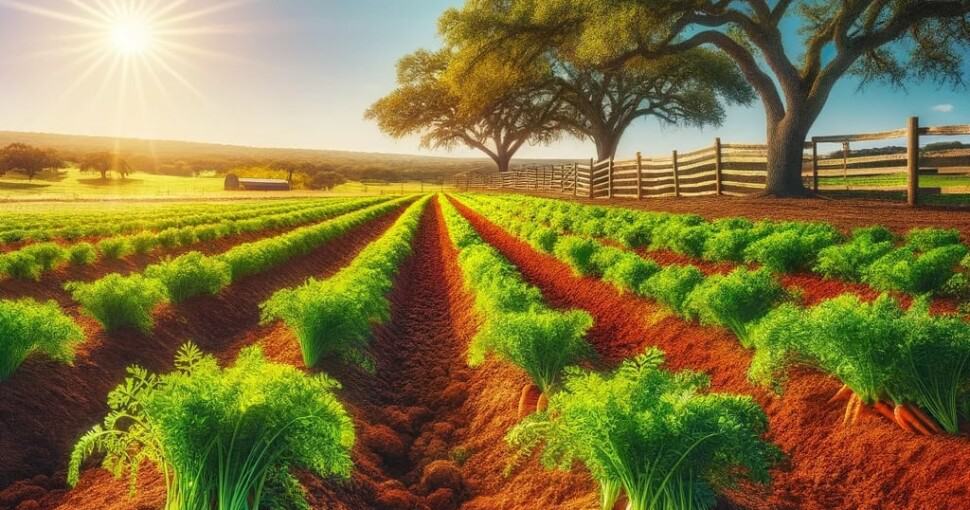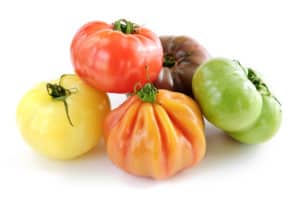Growing carrots in Texas is a rewarding endeavor that can provide you with a bountiful harvest of fresh, crisp, and sweet-tasting vegetables. By paying attention to soil preparation, watering, and selecting the right varieties, you can successfully cultivate carrots in the Lone Star State. Whether you have a backyard garden or limited space for containers, you can enjoy the satisfaction of homegrown carrots that are perfect for snacking, cooking, and adding a healthy touch to your meals.
Contents
Carrots are a versatile and nutritious addition to any garden, and they can thrive in the diverse climates of Texas with proper care and attention. In this guide, we’ll explore the essential steps to successfully grow carrots in the Lone Star State, from soil preparation to harvesting.
How to Grow Carrots in Texas
Soil Conditions
The first step to growing carrots in Texas is to ensure that you have the right soil conditions. Carrots prefer loose, well-drained soil with a pH level between 6.0 and 6.8. Texas’s soils can vary widely by region, so it’s essential to test your soil’s pH and amend it if necessary. Adding organic matter like compost can improve soil structure and fertility, making it ideal for carrot cultivation.
Fertilizer
Carrots are relatively light feeders compared to some other vegetables, but they still benefit from balanced nutrition. Before planting, mix a slow-release, balanced fertilizer into the soil based on soil test recommendations. Avoid using high-nitrogen fertilizers, as they can promote excessive foliage growth at the expense of root development. Apply a side-dressing of fertilizer when the carrot seedlings reach about two inches in height.
Water
Proper watering is crucial for growing carrots in Texas, where hot and dry conditions are common. Carrots require consistent moisture to prevent cracking and encourage even root development. Provide deep, regular watering to keep the soil consistently moist but not waterlogged. Mulching can help retain soil moisture and regulate soil temperature. Be mindful of the heat, as excessive heat can cause the soil to dry out quickly.
Containers
If you have limited garden space or challenging soil conditions, consider growing carrots in containers. Choose deep containers with good drainage to accommodate the carrot’s long taproot. Fill the containers with a high-quality potting mix amended with compost. Keep containers in a sunny location and monitor moisture levels closely, as pots can dry out faster than garden beds.
Planting Carrots in Texas
Now that you’ve prepared your soil and addressed essential care requirements, it’s time to plant your carrots.
- Select the Right Varieties: Choose carrot varieties that are well-suited for Texas’s climate. Some reliable options include Danvers, Chantenay, and Nantes varieties. These carrots are known for their adaptability to various conditions.
- Timing: In Texas, carrots can be planted in the late winter or early spring, depending on your region. For milder areas, planting in late winter is ideal, while areas with harsher winters should wait until early spring when the risk of frost has passed.
- Spacing: Sow carrot seeds thinly in rows or beds, with a spacing of about 2-3 inches between each seed. Thin seedlings to at least one inch apart once they reach a few inches in height to allow room for proper root development.
- Depth: Plant carrot seeds at a depth of about 1/4 to 1/2 inch in well-prepared soil. Lightly cover the seeds with soil, then water gently.
- Sunlight: Carrots thrive in full sunlight, so choose a location in your garden that receives at least 6–8 hours of direct sunlight each day.
Harvesting Carrots in Texas
Harvesting carrots is a rewarding experience, and in Texas, it can typically be done a few months after planting, depending on the variety and weather conditions.
- Timing: Carrots are usually ready for harvesting in 60 to 80 days after planting. To determine readiness, gently pull one carrot from the soil to check its size and color. Harvest when carrots reach the desired size and have vibrant orange coloring.
- Harvesting Technique: Use a garden fork or trowel to loosen the soil around the carrot before pulling it gently. Be careful not to damage the delicate roots. Harvest carrots as needed, leaving the remaining ones in the ground, where they will store well until you’re ready to enjoy them.
- Storage: After harvesting, remove the carrot tops and store the carrots in a cool, dry place. Carrots can be stored in the refrigerator for several weeks or kept in a root cellar for more extended storage.



